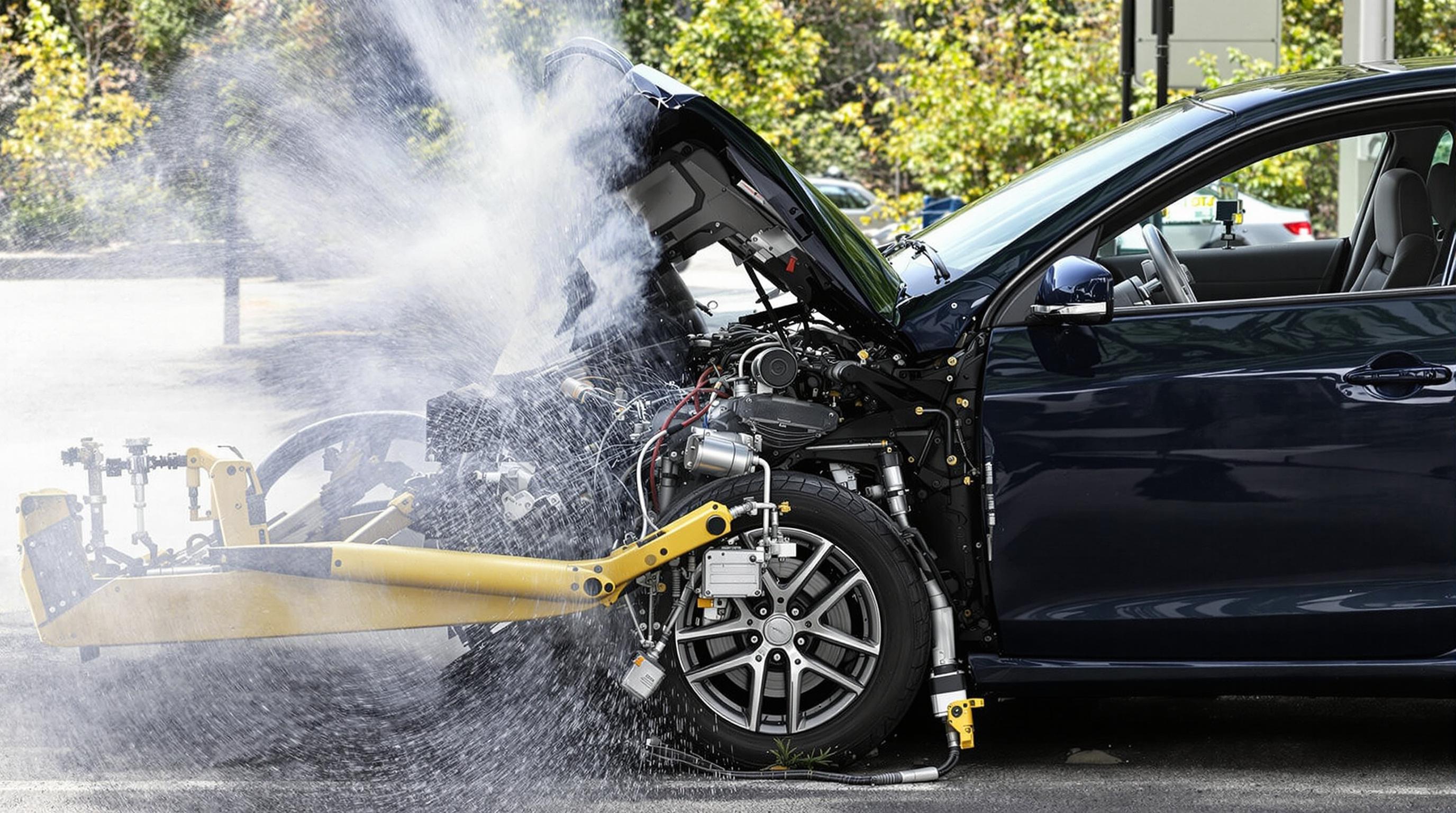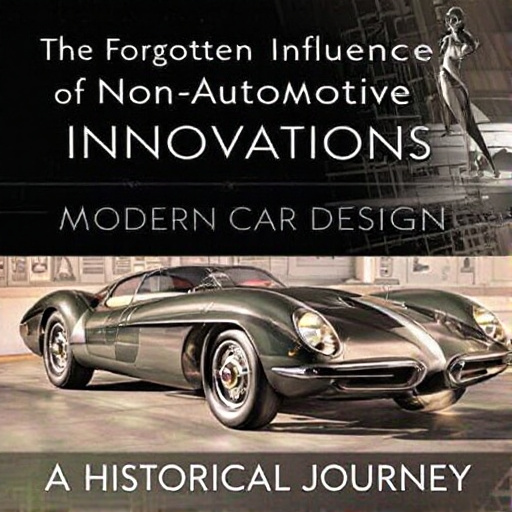Featured Articles
- 9 Little-Known Technological Breakthroughs That Revolutionized Automotive Safety Standards Over Time
- Forgotten Champions: The Rise and Fall of Electric Cars in the Early 20th Century
- Forgotten Gears: Unearthing the Bizarre Innovations That Shaped Early Automobile Design
- Forgotten Innovations: How 19th Century Steam Cars Inspired Today's Electric Vehicles
- Ghost Cars: The Eerie Legacy of Abandoned Automobiles in America's Automotive History
9 Little-Known Technological Breakthroughs That Revolutionized Automotive Safety Standards Over Time
9 Little-Known Technological Breakthroughs That Revolutionized Automotive Safety Standards Over Time
9 Little-Known Technological Breakthroughs That Revolutionized Automotive Safety Standards Over Time
1. The Safety Cage Frame
The safety cage frame isn't as widely discussed as airbags or seat belts, yet it fundamentally changed vehicle safety. Developed initially in the 1930s, this innovation involves reinforcing the passenger compartment with a rigid frame designed to absorb and distribute impact forces during crashes.
This design dramatically reduces the risk of injury by maintaining the structural integrity of the cabin. The safety cage concept evolved over decades, guiding modern car manufacturers to prioritize frame reinforcement while designing vehicles.
Its significance is supported by crash test data that consistently show reduced occupant injury rates in cars equipped with reinforced safety cages. This foundational advancement set a precedent for many other safety improvements in the automotive sector.
2. Energy-Absorbing Steering Columns
Introduced in the late 1960s, energy-absorbing steering columns were revolutionary for their ability to reduce driver injuries during frontal collisions. Before this breakthrough, rigid steering columns could impale or cause severe chest injuries in crashes.
The innovation involved designing the column to collapse or telescope upon impact, absorbing kinetic energy to lessen trauma to the driver. This technology was one of the first components engineered with occupant safety explicitly in mind rather than just vehicle mechanics.
Today, energy-absorbing steering columns are standard, and studies have credited them with significantly decreasing fatal and serious injuries among drivers in frontal impacts.
3. Crumple Zones
Crumple zones represent a brilliant approach to crash energy management. Pioneered by Mercedes-Benz engineer Béla Barényi in the 1950s, these zones are designed to deform strategically under impact to absorb crash forces.
Rather than the entire vehicle frame absorbing impact harshly, crumple zones sacrifice themselves in a controlled manner to protect the occupants inside. This innovation introduced a fundamental shift in how cars handle collisions, emphasizing energy absorption outside the passenger compartment.
The widespread adoption of crumple zones marked a dramatic improvement in survival rates and injury reduction during collisions, and it continues to be a critical safety feature in every modern vehicle.
4. Anti-lock Braking System (ABS)
The anti-lock braking system (ABS) was a game-changer by enhancing vehicle control during emergency braking. Emerging in the late 1970s, ABS prevents wheel lock-up, allowing drivers to maintain steering ability and reduce stopping distances on slippery surfaces.
This technology utilizes sensors to monitor wheel speed and automatically modulates brake pressure, preventing skidding. The enhanced control it provides significantly lowers the risk of collisions during sudden stops.
ABS has become a mandatory safety feature in many countries because of its proven effectiveness in reducing accidents, especially in adverse weather conditions (NHTSA, 2020).
5. Side-Impact Protection Beams
While frontal crash safety innovations often get attention, side-impact protection beams quietly improved occupant safety in side collisions. These robust steel or reinforced components installed in vehicle doors absorb and deflect impact forces away from passengers.
Introduced widely in the 1980s, side beams significantly reduce injuries from t-bone accidents, which historically led to severe occupant trauma due to the limited space between the door and passenger.
Modern vehicles now incorporate side-impact beams combined with side airbags, contributing to a considerable drop in casualties from side collisions according to traffic safety studies.
6. Tire Pressure Monitoring Systems (TPMS)
Often overlooked in the safety discussion, tire pressure monitoring systems (TPMS) have enhanced safety by alerting drivers of underinflated tires in real-time. Underinflated tires can impair handling and increase blowout risks, leading to accidents.
TPMS technology became mandated in many countries by the early 2000s, using sensors to continuously check tire pressure and warn drivers via dashboard indicators. Early warning allows timely maintenance, thus preventing loss of control mishaps.
Research links TPMS usage to a reduction in tire-related crashes, making this breakthrough both a convenience and a critical safety advancement (National Highway Traffic Safety Administration, 2007).
7. Electronic Stability Control (ESC)
Electronic stability control represents a quantum leap in preventing loss-of-control accidents. Introduced widely in the 1990s, ESC uses sensors to detect skids and automatically applies brakes to individual wheels, helping the driver maintain control.
This system is particularly effective during evasive maneuvers or slippery road conditions, correcting vehicle trajectory and preventing rollovers. Because ESC intervenes before a complete skid occurs, it drastically reduces crash risks.
Studies confirm ESC's critical role in reducing fatal single-vehicle crashes by up to 50%, leading to regulations mandating ESC in new vehicles globally (IIHS, 2011).
8. Pedestrian Detection Systems
Advancements in sensor and camera technology have led to pedestrian detection systems, designed to prevent vehicle-pedestrian collisions. First appearing in luxury vehicles in the early 2010s, these systems identify pedestrians in a vehicle’s path and alert the driver or automatically apply brakes.
This technology enhances urban safety, where pedestrian accidents can be frequent and severe. By integrating infrared or radar sensors, the system extends driver awareness beyond line-of-sight limitations.
Recent regulations and safety ratings increasingly emphasize pedestrian protection, and pedestrian detection is becoming a vital part of comprehensive automotive safety suites (Euro NCAP, 2018).
9. Advanced Airbag Technologies
While airbags have been around for decades, advanced airbag technologies have significantly improved their effectiveness and reduced injuries caused by airbags themselves. Innovations include multi-stage airbags, side curtain airbags, and occupant sensing systems.
These advancements tailor airbag deployment to crash severity, occupant size, and seating position, minimizing risks such as airbag-related injuries to children or small adults. Side curtain airbags provide crucial head protection in side impacts and rollovers.
Today’s airbag systems are considered essential life-saving devices, credited with saving thousands of lives annually and continually evolving to address emerging safety needs (NHTSA, 2021).
Conclusion
Automotive safety has evolved through numerous technological breakthroughs, many of which remain underappreciated despite their life-saving impact. From structural innovations like safety cages and crumple zones to advanced electronic systems such as ESC and pedestrian detection, these developments collectively enhance road safety worldwide.
As technology advances, continued innovation remains critical to reduce traffic-related injuries and fatalities further. Understanding and appreciating these lesser-known breakthroughs showcase the ingenuity behind safer travel and the future of automotive safety standards.
As vehicle manufacturers integrate these technologies into more affordable models, wider adoption promises safer roads for all users—drivers, passengers, and pedestrians alike.




